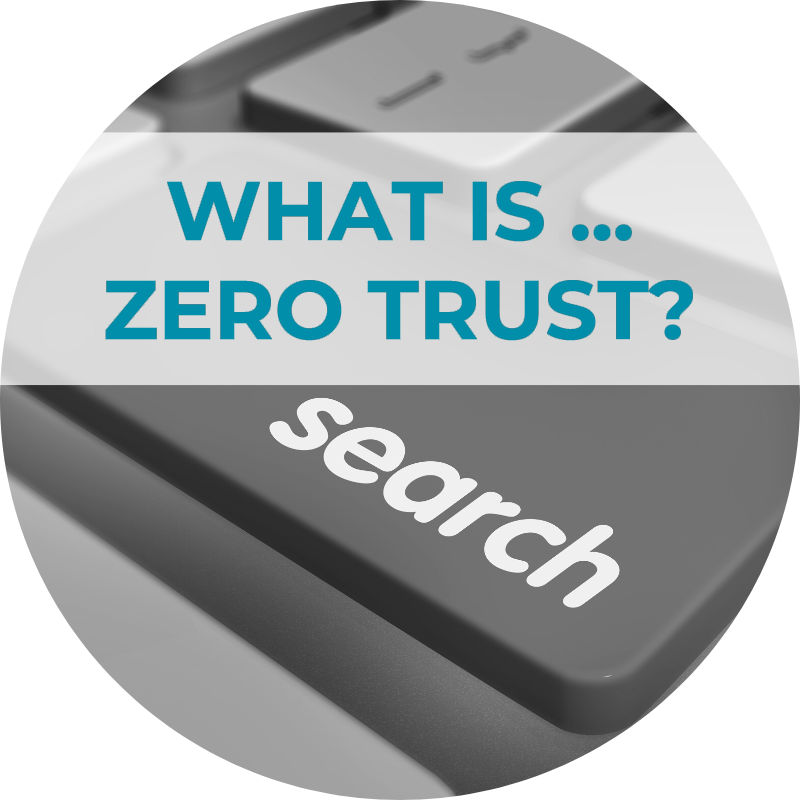
What is Zero Trust? Principles of a Zero Trust Architecture Model
What is Zero Trust security?
Zero Trust is a security concept integrates multiple key principles to eliminate all trust by default from security approaches.
The following principles empower organizations to take control over access and address emerging threats effectively:
- Take a ‘never trust, always verify’ approach, based on the assumption that no person, data or source can be trusted without being verified as authentic, authorized and safe.
- Enforce “least privilege access” across all resources and tools. For instance, instead of restricting access at the network edge, like traditional castle-and-moat network security approaches, Zero Trust architecture protects every resource on the network, wherever it is located, by limiting access to that resource to only authorized individuals who need it for their work. Microsegmentation and strong access and action controls are typical ways to minimize access privileges.
- Assume breach. Assuming breach requires organizations to take every step to minimize the repercussions should a breach occur. This requires strict monitoring, limiting the blast radius should a breach occur, and having remediation procedures in place.
Zero Trust is not a brand-new approach to cybersecurity. However, it has only recently been accepted near-universally as the best approach to protecting an organization’s digital assets and infrastructure. More importantly, until recently, cloud computing was insufficiently mature to support the technology needed to provide solutions that truly adhere to Zero Trust principles.
Why Choose a Zero Trust Architecture for Enhanced Security?
In today’s day and age, a Zero Trust security approach has become a necessity. Gone are the days where perimeter security tools like firewalls are enough to keep an organization protected.
Most organizations are moving toward a hybrid cloud infrastructure, with resources and data stored both on-premises and in the cloud. In addition, the recent uptick in remote and hybrid employment means that there are many more access points to a network than ever before, with remote workers logging in from their own unmanaged home computers and mobile devices. Such a highly distributed network is far harder to protect, as it’s difficult to ensure that every connection is secure, and every device remains uncompromised. In these cases, relying on protecting the network perimeter is insufficient.
In addition, organizations that haven’t yet implemented a comprehensive Zero Trust solution usually rely on a combination of different tools to provide network protection, increasing the workload of the security team, while still leaving gaps that leave the network vulnerable to data branches and cyberattacks.
How does Zero Trust Security Work?
The Zero Trust framework was developed in 2010 by John Kindervag, a principal analyst at Forrester Research. In the Zero Trust model, every connection to the network, no matter where it comes from, must be considered ‘guilty until proven innocent’. Zero Trust principles are implemented to monitor, authorize, and verify all network connections to resources through network traffic inspection and secure access control at the resource level.
When a user wants to connect to a particular resource in a network, they must have specific permissions to access that resource, and their identity must be verified every time they connect to the resource, be it software, an application, or data. A Zero Trust network model is underpinned by strict Zero Trust security policies that authenticate based on as much information as possible, across all networks, devices, users, and connections.
What are the key elements of Zero Trust architecture?
Many different elements may be included in a comprehensive Zero Trust framework. Some typical components include:
- Microsegmentation − dividing the network into individual zones for each resource, providing granular access controls for each microsegment.
- Least privilege access controls − providing users with access only to the users they need, when they need them.
- Device access control − monitoring and identifying all devices connecting to the network, ensuring every device is authorized and not compromised.
- Identity and Access Management (IAM) − advanced authentication methods, using SSO, multi-factor authentication (MFA), and lifecycle management to create identity records for every user and ensure secure connections to every resource, verifying user identity by context and at least two authentication factors.
- Remote Browser Isolation (RBI) − Zero Trust for web browsing and file downloads, with all web-based code running in an isolated, remote browser, away from the network, and end-users receiving a clean media stream, so that malicious code can’t reach the endpoint at all.
- Continuous monitoring and analytics − monitoring the network traffic and analyzing behavior in real-time, to enforce Zero Trust policies and identify any potential vulnerabilities, so that you can adapt and update quickly when needed.
- Cloud Access Security Broker (CASB) − Zero Trust cloud security for software-as-a-service and other cloud-based resources.
- Zero Trust Network Access (ZTNA) − provides secure access to applications, services, and data. ZTNA is a superior alternative to a VPN, in that instead of providing access to an entire network like a VPN, it provides access only to the application or service required at the time, after the user has been authenticated to the ZTNA service using a secure, encrypted tunnel. This prevents lateral movement across the network, as all other resources remain hidden. Even if an attacker were to gain access to one resource, they won’t be able to locate any of the other resources on the network. According to Gartner, Zero Trust Network Access is set to replace VPNs by 2025.
What are the advantages of Zero Trust architecture?
There are many benefits of implementing a Zero Trust model to protect your network:
- Visibility and control over the network at a granular level − a transparent view of the network allows fast detection and shut down of attacks before they can do any damage.
- Protection for remote workers − Zero Trust works for managed and unmanaged devices, providing network security coverage for remote workers.
- Protection for cloud-based resources − when it comes to resources stored in the cloud, they’re also covered by a comprehensive zero-trust approach, making it ideal for today’s organizations, who are increasingly using cloud-based services and applications.
- Reduced risk and attack surface − least-privilege access means that users are granted only the permissions they need to access resources vital for their work – nothing more, nothing less. This prevents them from seeing – and possibly exploiting – data they have no business accessing.
- Superior data protection − when using Zero Trust, you can be sure that your data is safer, thanks to the continuous verification required for users to access said data.
- Better user experience for remote workers – Zero Trust allows users to work from anywhere on any device they choose. This is a huge win for productivity and flexibility.
- Compliance with regulations – a Zero Trust framework often aligns with industry standards and requirements through the use of strict access controls and authentication mechanisms. When it comes to protecting sensitive data, microsegmentation helps reach compliance by isolating the data, keeping it extra secure.
How can you apply the Zero Trust framework?
Here are the suggested steps you need to take to implement the Zero Trust model in your organization:
- Assess your current network architecture, identify any vulnerabilities and gaps in your current security setup.
- Develop a detailed plan for your transition to Zero Trust, based on organizational needs and objectives.
- Develop a microsegmentation strategy and implement it, dividing your network at the resource level to reduce the attack surface and prevent lateral movement.
- Create policies to support the Zero Trust framework being implemented.
- Implement a zero trust solution that includes IAM (Identity and Access Management) tools, endpoint security solutions, ZTNA, coverage for distributed devices and resources, as well as continuous monitoring and analysis. For best results, instead of testing and picking multiple vendors, choose a comprehensive SSE (Security Service Edge) solution that includes all of the needed elements in one platform. For example, Ericom provides microsegmented network access, RBI, IAM, CASB, secure remote access, and more, all in a cloud-based solution.
- Provide training and awareness to employees about the Zero Trust approach, so that they can be cautious and protect themselves against phishing attempts and other cyber threats.
- Continuously test, update and upgrade your Zero Trust model, to ensure no new vulnerabilities develop and continue providing protection against the latest threats.
Real-world applications of Zero Trust architecture
Today, virtually any organization using network technology and storing digital information might explore adopting a Zero Trust framework. Below are some of the most frequently encountered scenarios where Zero Trust can be beneficial:
Accelerating new employee integration
Traditional security systems like VPNs might need to scale up their capabilities to accommodate an influx of new users, which can often be slow and tedious. Zero-trust architectures simplify and speed up the onboarding of new employees by offering easy-to-implement, scalable solutions.
Cloud and multi-cloud access management
In a Zero-trust environment, every access request is scrutinized, irrespective of its origin or endpoint. This scrutiny enables better control over unauthorized usage of cloud services by blocking or regulating access to unapproved applications.
Enabling secure remote operations
Conventional VPNs can sometimes create performance lags that hinder remote work efficiency. Zero Trust eliminates this issue by delivering secure, seamless access control for remote connections, allowing employees to work productively from anywhere.
Onboarding external collaborators
For third-party vendors, freelancers, or contractors not on an organization’s internal network, Zero Trust offers a streamlined process to provide them with limited, need-to-know access rights. Operating in a Zero Trust environment ensures they can perform their tasks without compromising security.
VPN alternative or enhancement
Traditional VPN solutions, while functional, have limitations that make them less suitable for countering modern security threats. Zero Trust architecture serves as either an effective alternative or a supplemental layer that improves overall network security.
Case study: Multinational IT consultancy leverages Ericom’s Web Application Isolation for enhanced HR app security
A multinational IT consultancy firm faced multiple challenges as it transitioned to a remote workforce during the COVID-19 pandemic. The company was particularly concerned about allowing remote access to its HR applications without risking the transmission of malware from unmanaged devices to its enterprise network. Additional worries included shielding the app code and APIs from potentially malicious insiders and allowing remote users to upload files securely.
Ericom provided a solution with its Web Application Isolation, a unique approach that utilizes remote browser isolation (RBI) in an reverse manner. The technology routes all content from a user’s device through an isolated container in the Ericom Global Cloud, sending only a secure data stream to the user’s local browser.
This process ensures that any malware on user devices can’t interact with the HR apps. Furthermore, the app code remains hidden, minimizing potential vulnerabilities. Ericom’s Content Disarm and Reconstruct (CDR) technology also sanitizes any documents uploaded to the HR apps, eliminating the risk of malware infiltration.
The outcome was a win-win situation: Employees and contractors could easily access HR applications while the company’s network remained secure. Ericom’s Web Application Isolation offered robust protection against malware, ransomware, and potential internal threats without compromising the user experience. Read the full case study here.
Why choose Ericom for Zero Trust security?
Ericom’s Zero Trust Network Access offers a secure and flexible alternative to traditional VPNs for remote work environments. ZTNA excels in scalability and manageability, allowing organizations to connect users to any application or resource, whether it is in the cloud or on-premise.
Our user-friendly management console lets you set granular access policies. It provides continuous, fine-grained visibility into user behavior and network traffic via dashboards. This aids in boosting productivity, saving time on manual configurations, and enhancing security by minimizing the risks of lateral movement and ransomware attacks.
For organizations dealing with the challenge of unmanaged devices and BYODs, especially from third-party contractors, we also offer Web Application Isolation. Web Application Isolation enables strict data-sharing controls and loss prevention measures, securing your corporate applications from potential threats.
If you’re grappling with the complexities and security limitations of VPNs or if you’re looking for robust, scalable solutions that can adapt to the ever-evolving landscape of remote work, it’s time to consider Ericom’s Zero Trust Network Access.
Interested in taking steps toward a more secure future? Contact us today for more information.


